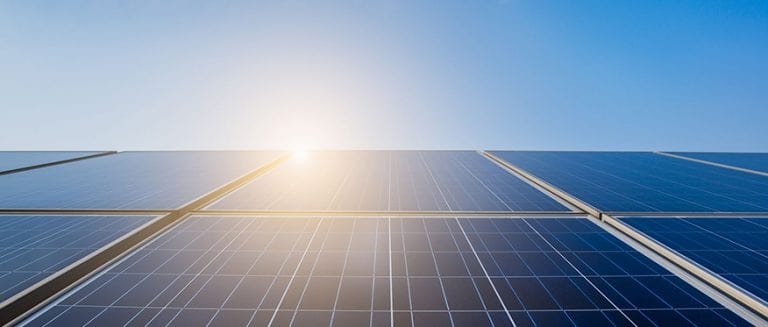On-Grid Solar Roof Systems

With the growing popularity of solar energy, there is a demand for different kinds of solar power systems . In this scenario, it is important to understand the different kinds of solar energy systems. There are 3 types of systems: (a) On-Grid Solar Roof Systems (b) Off-Grid Solar Roof Systems (c) Hybrid Roof Systems. The On-Grid Solar Roof System is one of the most widely used in the market. This is a SPGS (Solar-Powered Generation System) where the solar photovoltaic system is connected to and integrated with the grid. The power generated by this system is sent to the electricity provider or the grid from where it is used to run the appliances. the installation of this system is hassle-free, and it is easy to maintain.
Components of On-Grid Solar Roof System:
Solar PV Modules
Mounting Structures
Solar Inverter
Monitoring Device
Bi-Directional Net Meter
BOS
How Does On-Grid Solar Roof System Work?
The solar panels absorb the sunlight that falls on them and convert the rays into electricity – this generated power is DC (direct current) which is then converted to AC (alternating current) by the solar inverter. The converted current is then sent to the grid from where it is supplied for daily use. A net meter is a unit that records the electricity which is sent to the grid and the electricity that is used. At the end of a month the net metering unit generates a “net” statement of consumption.
Benefits of On-Grid Solar Roof System
When a consumer has installed the solar power system, he has to pay for the power consumed by him minus the power supplied back to the grid. Naturally, the more power that is generated, the lower the electricity bill.
Net metering: It is another benefit for the on-grid rooftop solar system. It allows consumers to feed extra solar power into the grid when the power is not needed and receive a credit on the electricity bill. Net metering simply uses the grid as a huge battery to balance demand supply gaps.
Lower Maintenance: Of the 3 kinds of Solar Powered Generation Systems, the On-Grid system has the fewest number of parts. An easy installation and the absence of batteries makes this a popular system.
How is an On-Grid rooftop solar system installed?
We have created a video which shows the actual installation of a solar rooftop facility by CleanMax at Alkem Laboratories in Navi Mumbai, Maharashtra. The step-by-step process is as follows:
Step 1: Designing and Marking for the rooftop solar power plant system installation.
Step 2: Civil Work and Curing
This includes building columns to hold mounting structures. There is no drilling or puncturing on the rooftop. This process takes about six days.
Step 3: Module Mounting and Structure Installation.
Now the execution team installs the module mounting structures on civil foundations.
Step 4: Module Installation
Solar modules (panels) are bolted onto the structures after this. This process takes a few days, depending on the size of installation. In this case, it took 4 days.
Step 5: Cabling
The modules are now connected in series with DC cables to the inverter, and with AC cables from the inverter to the evacuation point (Alkem’s LT panel).
Step 6: Inverter Connection and Grid Synchronisation
The inverter is now charged and begins synchronizing the solar power with Alkem’s existing electrical grid.
Step 7: Seamless Power Distribution
Lastly, seamless power distribution begins as soon as the electrical connections are in place. Installing a solar plant is not only a hassle-free it is also a wise business move to reduce operational costs.
Read more about the rooftop solar installation in Alkem Laboratories .